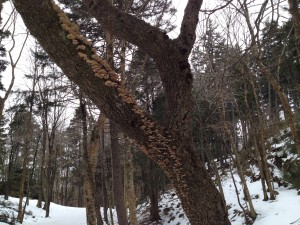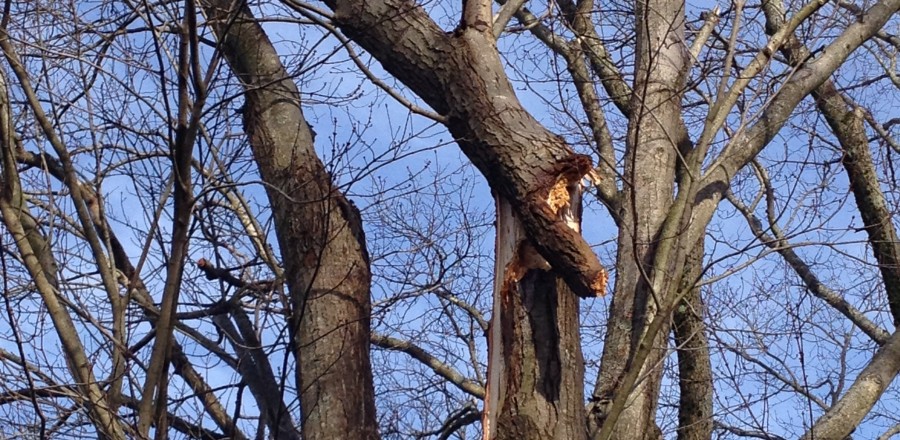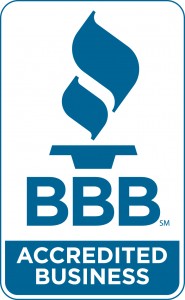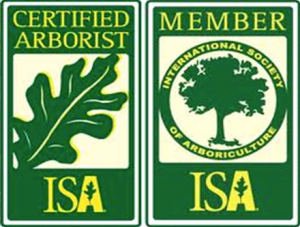Identifying Tree Hazards –
Living with trees provides us with many benefits but they can also be dangerous. It is important to confront tree hazards as they arise. This will help to keep the tree healthy and decrease the chance of future problems. Identifying and correcting tree hazards will allow for a safer environment of you, your family and your property. Here is a list of some of the common problems that affect the safety of a tree.

This tree has three structural defects. A co-dominant stem, fruiting bodies (mushrooms) and it is leaning to one side.
- Dead branches and dying parts – Dead branches will eventually fall off and should be removed as soon as possible. Branches over 5cm in diameter can cause harm to people and property. Removing dead wood will prevent decay from entering the rest of the tree and improves the health of the tree.
- Broken and hanging branches – These will inevitably fall off and could cause damage.
- Co-dominant stems – These stems create weak branch unions. Trees can be pruned to remove co-dominant stems and promote one strong main stem or trunk.
- Mushrooms – Mushrooms or fruiting bodies appear in dead wood. Mushrooms growing on the ground usually mean there are dead and rotting roots. This will greatly reduce the structural integrity of the tree.
- Cavities, cracks and holes – Every year water enters into these spaces. When the water freezes it expands and increases the size of the defect in the tree. Cavities, cracks and holes should be examined to diagnose the severity of the defect.
- Leaning or unbalanced trees – A tree growing in an urban environment can grow unevenly for many reasons. Trees should be balanced after being pruned. Generally a branch should not be more than 1/3 of the size of the main trunk.
Contact Solid Tree Care to have a Certified Arborist conduct a Tree Risk Assessment on your property.



